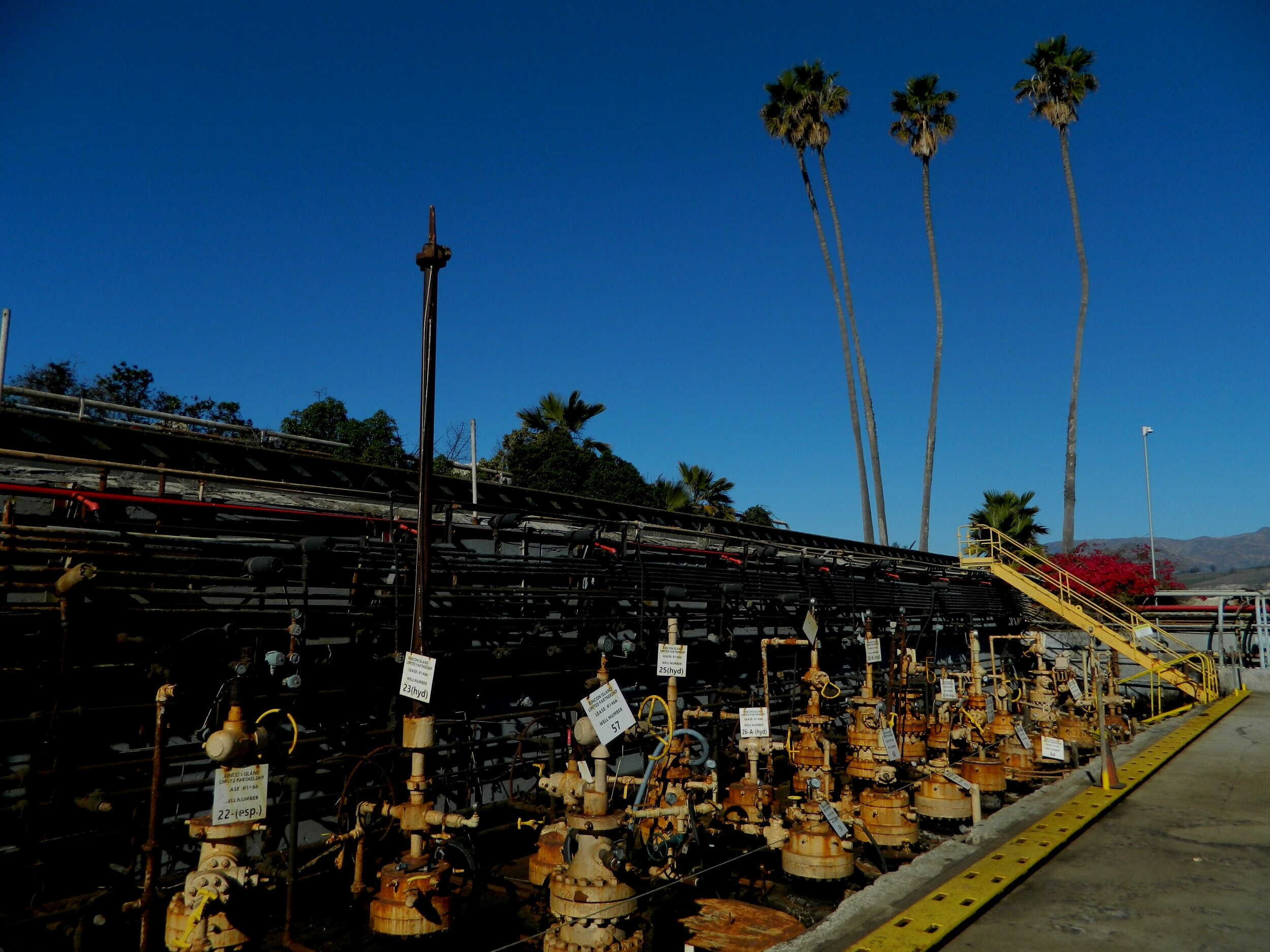
Event 3: Oil Decomissioning
In January and February 1969, an oil catastrophe changed the California coastline and the public’s understanding of the oil platforms that were visible from the beaches. During the ten-day spill, 80,000 to 100,000 barrels of crude oil flooded the Santa Barbara Channel, contaminating the waters north to Ventura, the northern Channel Islands (26 miles from shore), and south to Los Angeles County beaches. An uncountable number of marine life and birds were made ill or killed by the spill, and outrage over their deaths and the befoulment of the beaches brought awareness to environmental issues, leading to the creation of Earth Day in 1970. At the time, it was the largest oil spill in the United States, but now it is third, after 2010 Deepwater Horizon and 1989 Exxon Valdez. More oil spills have happened in Santa Barbara since 1969, and the state of California has 107,000 active and inactive oil and gas wells. Event 3 asks participants to consider the history of oil in Santa Barbara and California as moments of echoing themselves over and over through time. Who is listening? After decades of discussions over what to do with wells, especially those that are inactive, there are calls to decommission and dismantle them. This work comes with its own challenges. Besides fighting for the past to not repeat itself (again), the oil industry is still calling for new projects in the county and the state while abandoning others that run dry. Even though policymakers see the social and economic value of decommissioning wells and cleaning up, there are still lessons from the past to be learned and remembered.








